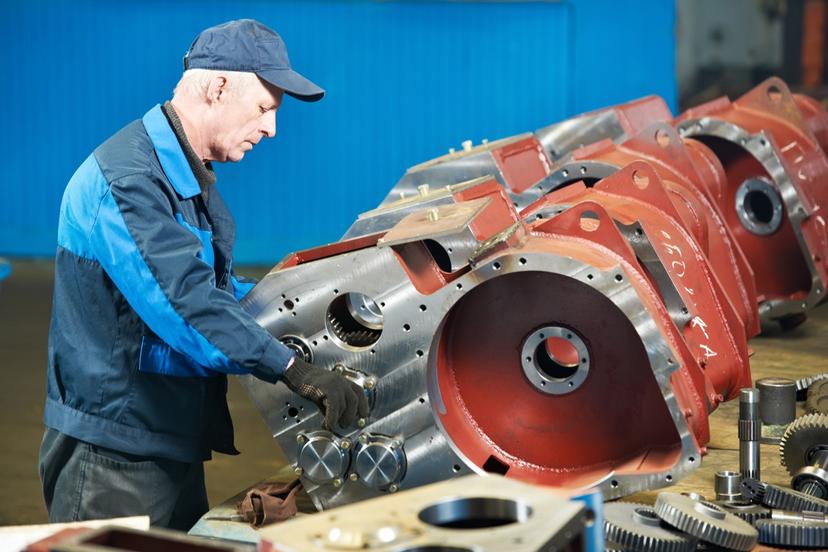Manufacturing

Structure
The National Association of Manufacturers (NAM) reported that in 2019 the manufacturing industry contributed nearly $2.37 trillion to the U.S. economy, or approximately 11.1 percent of the nation's gross domestic product (GDP). If considered independently, NAM concluded, in 2016 the U.S. manufacturing sector would be the eighth largest economy in the world. Additionally, many jobs in manufacturing pay somewhat higher annual salaries than those in other industries. NAM also reported average earnings of $87,185 for U.S. production workers.
Manufacturing covers a wide range of industries, primarily in two categories: durable and nondurable goods. Durable goods have a long life span and hold up over time; nondurable goods have a shorter life span. The manufacturing industry employs workers with an equally wide range of skill levels, education, and interests. Among workers important to the manufacturing industries are engineers and technicians, administrative and supervisory staff, production workers, quality control inspectors, sales representatives, and clerical support staff.
Engineers are an important part of the manufacturing workforce. Their work focuses on research, development, analysis, planning, surveying, application, facility evaluation, and more. Some work on the design and refinement of the products to be manufactured, while others work on the design and assembly of the machines and tools that make these products. Engineers also work on environmental concerns, including regulatory compliance, traffic patterns within the plant, hazardous waste control, and ergonomic issues. Technicians work with and provide support to engineers.
Department managers, supervisors, and forepersons oversee manufacturing facilities and serve as liaisons between administrative staff and production workers. These employees usually have a great deal of experience as production workers and are responsible for such areas as worker productivity, product quality, safety and health, and plant and machine maintenance.
Production workers, make up the largest segment of manufacturing employment, by far. They operate, tend to, and adjust machines, tools, and equipment; assemble parts; and package products. They cut, drill, mold, stamp, cook, stir, measure, glue, wrap, and perform the millions of other tasks required by manufacturing processes. Manufacturing provides good jobs for low- and semiskilled workers, with higher wages and better benefits than nonmanufacturing jobs.
Quality control inspectors examine and test products to check for defects or other problems with the manufactured materials. Sales representatives reach out to customers, including governments, businesses, and others that may use the products the manufacturer develops and produces. Manufacturing company support staff performs a variety of duties from answering office phones, managing bookkeeping and accounting records, filing reports, and more.
